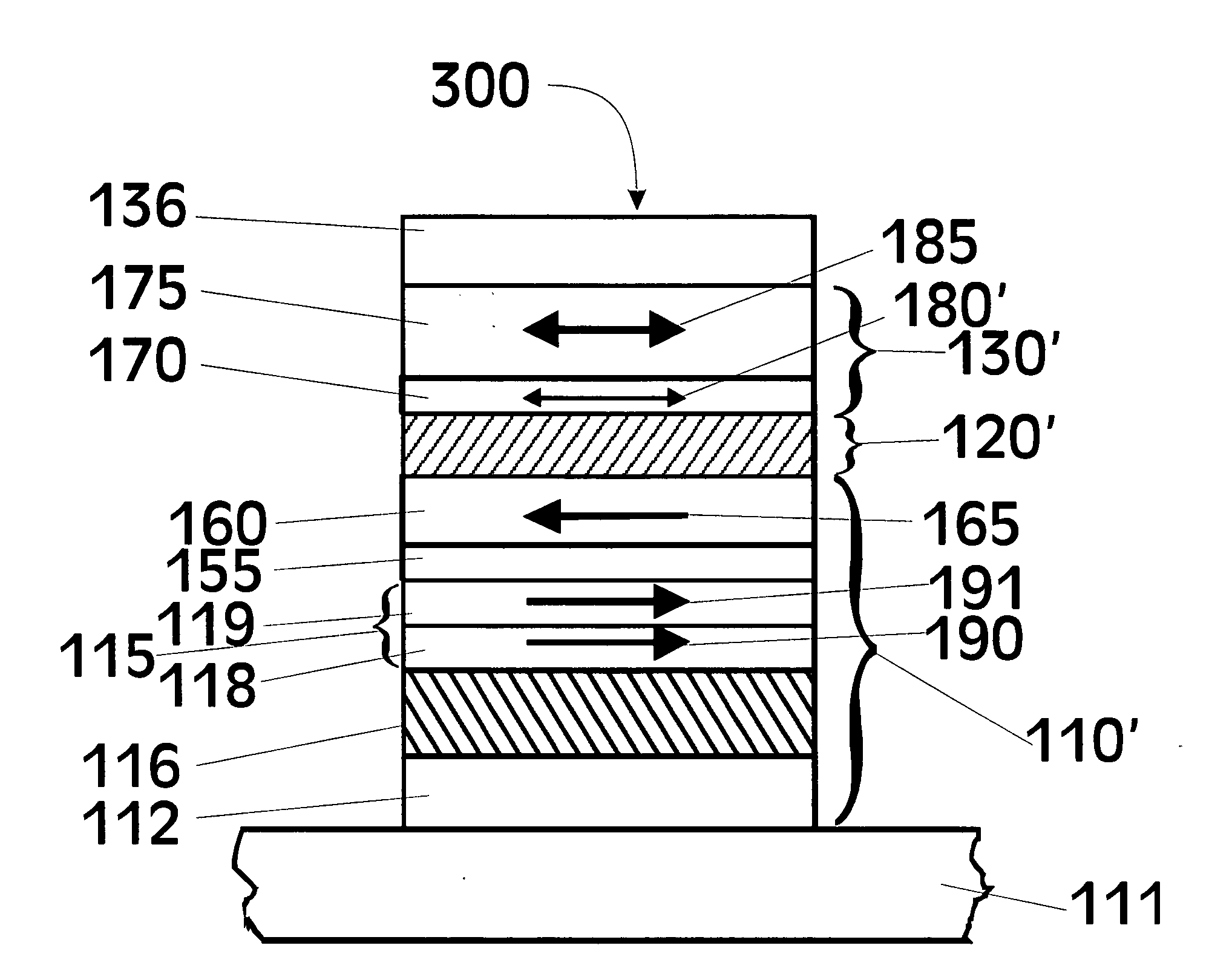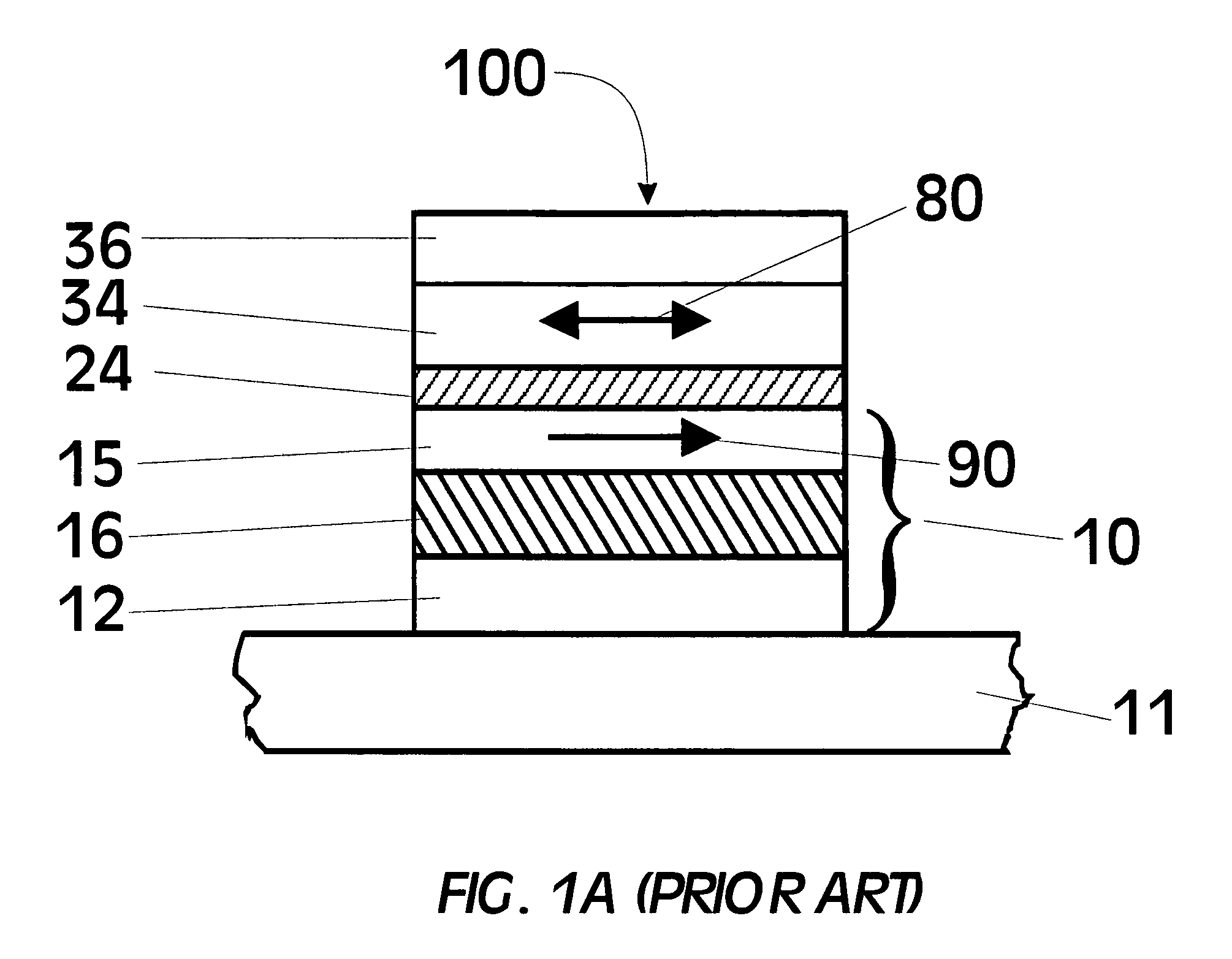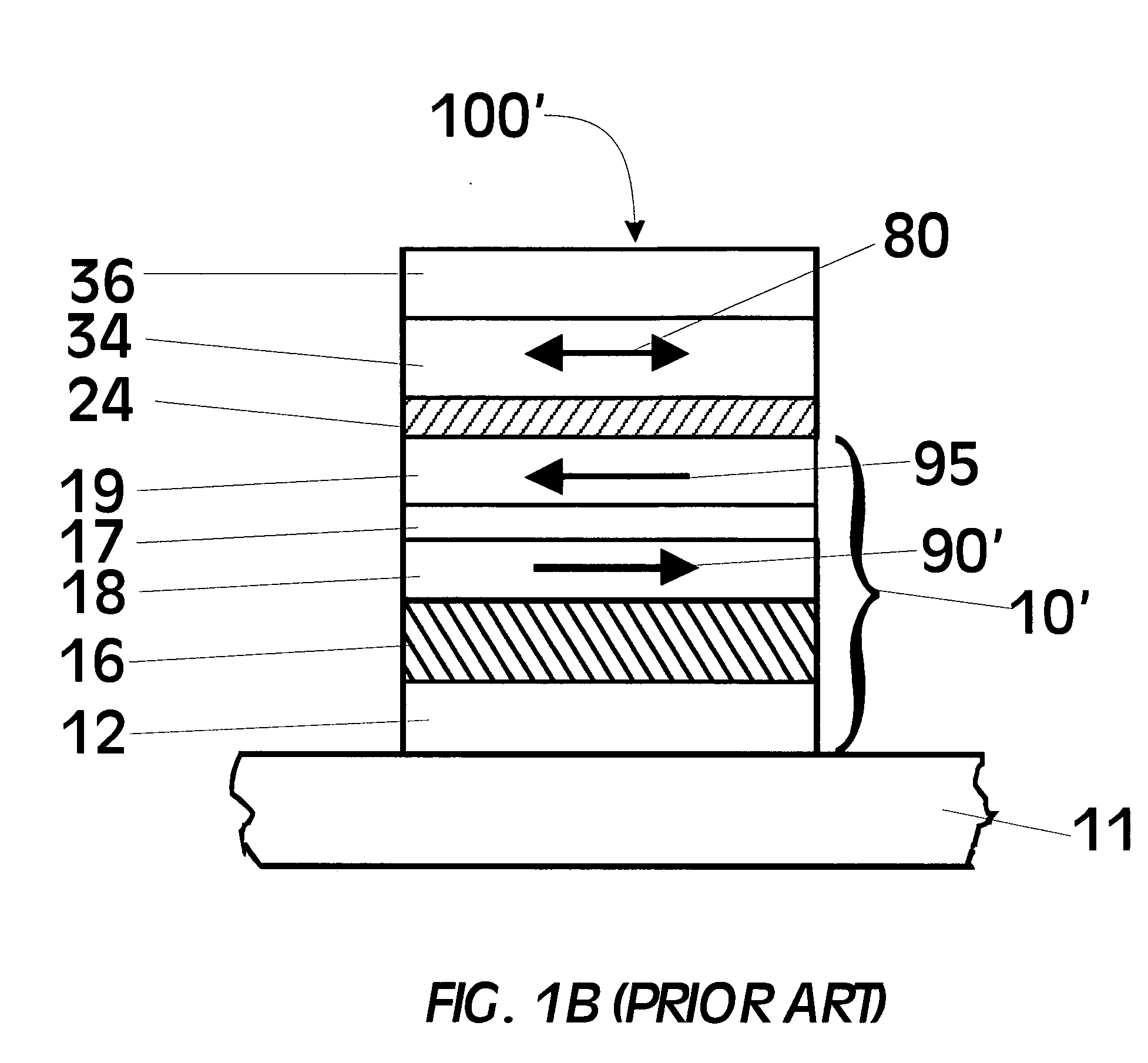Magnetic tunnel barriers and associated magnetic tunnel junctions with high tunneling magnetoresistance
a magnetic tunnel junction and tunnel barrier technology, applied in the field of magnetoresistive devices of magnetic tunnel junctions, can solve the problems of large self-demagnetization of devices, unwanted coupling fields in mtjs without a synthetic antiferromagnetic reference layer, etc., and achieve the effect of improving the performance of the tunnel barrier
- Summary
- Abstract
- Description
- Claims
- Application Information
AI Technical Summary
Benefits of technology
Problems solved by technology
Method used
Image
Examples
Embodiment Construction
[0040]The possibility of high tunneling magnetoresistance in MTJs formed from Fe / MgO / Fe sandwiches where the tunnel barrier is formed from crystalline (100) oriented MgO layers was theorized by W. H. Butler, X.-G. Zhang, T. C. Schulthess et al., Phys. Rev. B 63, 054416 (2001). However, extensive experimental work by many groups over a period of several years showed no evidence for improved tunneling magnetoresistance values using crystalline (100) MgO tunnel barriers as compared to amorphous alumina tunnel barriers. It was speculated that during the formation of the MgO tunnel barrier, the surface of the lower Fe electrode became oxidized perhaps resulting in much lower TMR than theorized. In U.S. patent application Ser. No. 10 / 824,835 to Parkin titled “MgO tunnel barriers and method of formation” (filed Apr. 14, 2004), supra, a method for forming MgO tunnel barriers is described which gives rise to MTJs which exhibit extraordinarily high values of tunneling magnetoresistance. To pr...
PUM
 Login to View More
Login to View More Abstract
Description
Claims
Application Information
 Login to View More
Login to View More - R&D
- Intellectual Property
- Life Sciences
- Materials
- Tech Scout
- Unparalleled Data Quality
- Higher Quality Content
- 60% Fewer Hallucinations
Browse by: Latest US Patents, China's latest patents, Technical Efficacy Thesaurus, Application Domain, Technology Topic, Popular Technical Reports.
© 2025 PatSnap. All rights reserved.Legal|Privacy policy|Modern Slavery Act Transparency Statement|Sitemap|About US| Contact US: help@patsnap.com



